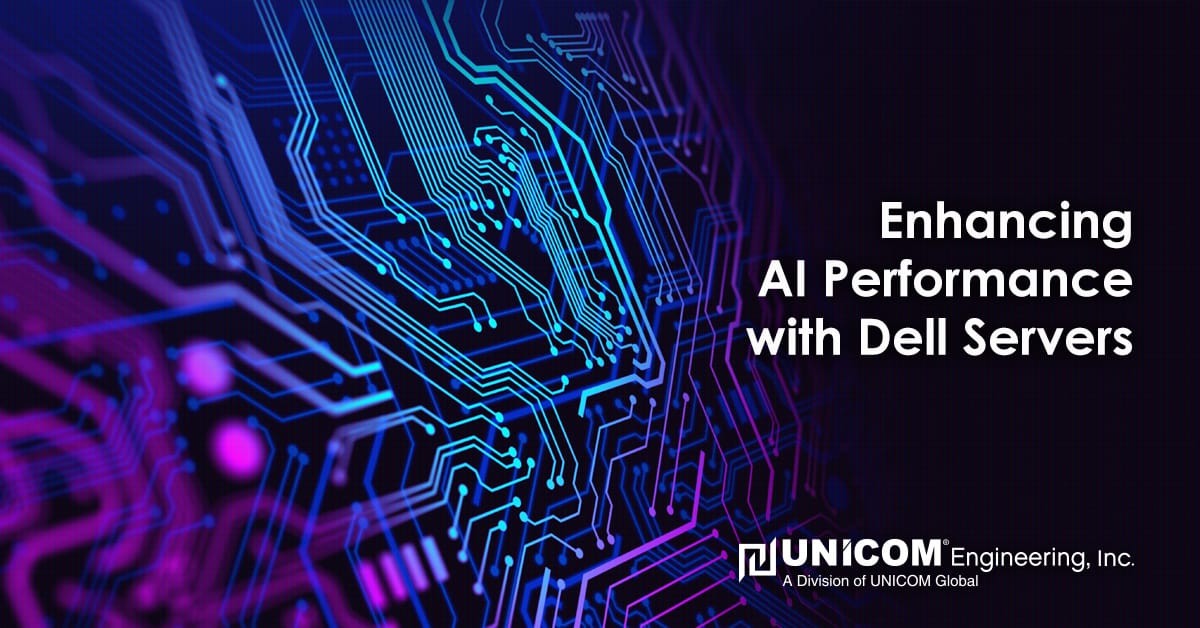At the end of the workday, AIs work to keep us healthy and alive by aiding in the diagnosis and treatment of diseases like COVID-19 in hospitals and universities worldwide. Therefore, for any given organization, there is no question about whether or not the continued development of AI performance will have an impact. In many ways, it already has.
The challenge of consistent AI performance advancement
AI algorithms thrive on finding patterns in data. Faster processors enable the system to ingest the ever-increasing load of information and deliver more helpful insights. However, newer chips can come with environmental challenges.
Today's processors generate more heat due to their millions of calculations. We can no longer expect to increase computing power and AI performance without paying the price for heat generation. Therefore, the methods we use to cool CPUs and GPUs must continue advancing, or deployment will demand costly space and power.
A new generation of flexible, high-performing servers optimized for AI and HPC workloads is needed to deliver more efficient and effective cooling without compromising performance.
The solution - Dell Technologies' latest PowerEdge servers
To meet the needs of modern AI applications like HPC, simulation and modeling, object detection, and high-end analytics, Dell Technologies introduces the Dell PowerEdge XE9680, XE9640, and XE8640 servers. Each platform offers a unique configuration to suit the needs of a different AI/HPC deployment:
Dell PowerEdge XE9680
This server is engineered to deliver improved AI performance and the fastest time-to-value. It pairs the most recent 8x NVIDIA A100 SXM or H100 GPU accelerators with two 4th Gen Intel Xeon Scalable processors. It can run in environments up to 35 degrees centigrade and operates in a 6U configuration.
Ideal Use Cases:
- Natural language processing
- Large language models
- Recommendation engine training
- Modeling and simulation
- Digital twins and manufacturing
Dell PowerEdge XE9640
This server supports four Intel Data Center Max GPU accelerators and two 4th Gen Intel Xeon Scalable processors. In addition, it offers direct liquid-cooled CPUs and GPUs that offer next-gen performance optimized for the best possible density and scalability. The XE9640 is available in a 2U configuration.
Ideal Use Cases:
- Large recommendation engine training
- Natural language processing
- AI, ML/DL training for object recognition
Dell PowerEdge XE8640
Designed to deliver superior performance, this XE8640 features two 4th Gent Intel Xeon Scalable processors and four NVIDIA H100 Tensor Core SXM GPUs and NVLink. Air-cooled, it can still operate up to 35 C and is designed to run data-heavy workloads like AI modeling and simulation. The XE8640 comes in a 4U configuration.
Ideal Use Cases:
- Medium data set language models
- Natural language processing
- AI, ML/DL training, and inferencing
- Image recognition
Planning to Get the Most Out of Your AI
According to Dell's experts, planning is crucial to any organization's AI success. When mapping your path to deployment, consider the following steps:
Define strategic outcomes- by assessing your existing environment and specific business challenges.
Put data to work to realize your AI vision- by partnering with technology vendors who can build a high-performing yet cost-effective solution for your individual use case.
Enhance your competitive advantage to enable innovation- by continuing to evolve your use cases and taking advantage of past achievements.
Building your next AI solution
Look to UNICOM Engineering to provide your AI servers and system integration expertise. As an Intel Technology Provider and Dell Technologies OEM Partner, they can supply, build, and support the best hardware to meet or exceed the needs of your application and help you bring it to market faster. Schedule a consultation today to learn more about how UNICOM Engineering can keep you moving forward on your AI journey.
